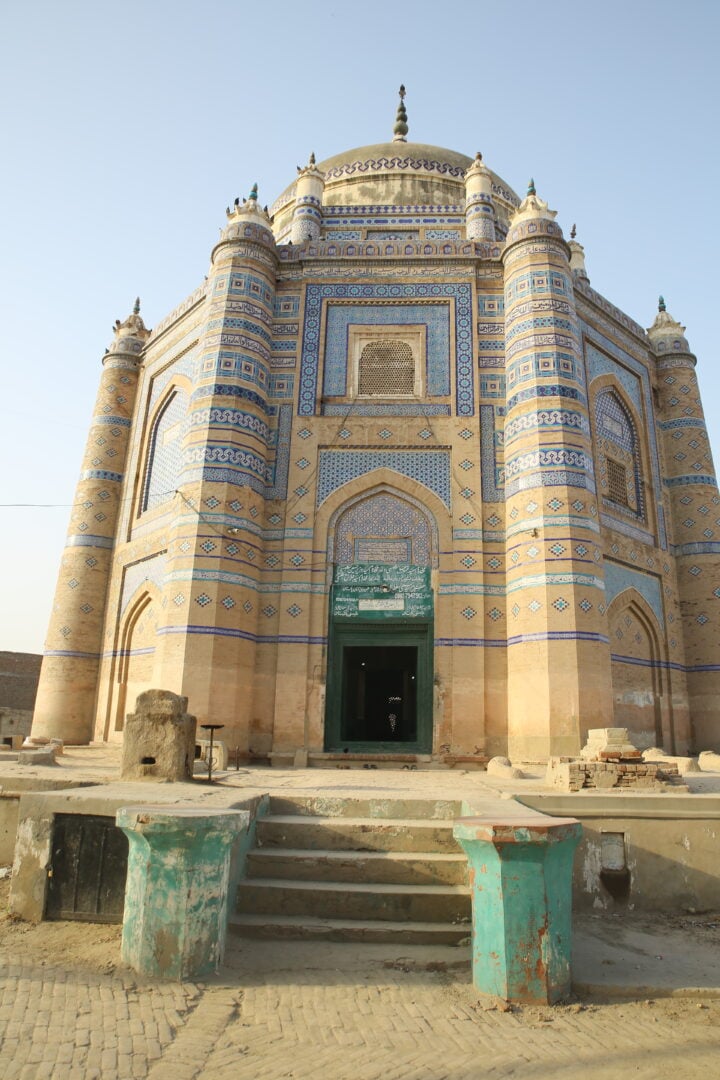“Multan is a city of saints and scholars, where the ancient past is inextricably linked with the present,” said Tariq Ali in his book “The Land of the Saints: The History of Multan.” Located in South Punjab, on the bank of the Chenab River, Multan is often understood to be the spiritual hub of Pakistan, to the extent that it is recalled as the city of saints. However, the city is important for multiple reasons. With its strategic importance in spreading Islam, its border with India, economic and commercial contributions, and tourist attractions, Multan is one of the most important cities in Pakistan.
Historical Background of Multan, Pakistan
It is widely believed that Multan existed since the Harappan civilization, which thrived during 3000–2800 B.C. The city’s ancient origins are reflected in the oldest scriptures, including the Hindu scriptures relating to the Mahabharata War. Additionally, the Holi festival originated from the Prahlad temple in Multan. Hence, Multan is of importance to the Hindu community of Pakistan, who share an affinity with it.
Later, in 327 BCE, Alexander the Great with his mighty Macedonian Army headed to conquer the Indian subcontinent, where he defeated multiple kings of Sindh and Punjab. The tale of Alexander’s victory over Porus in East Punjab is famous, and even more famous is the distressing injury caused by the Malian leader who shot an arrow directly into Alexander’s lungs. The Malians were a nation based in Multan, which was on an island in the Ravi River at that time.

In 664 A.D., the city was conquered by Muslims for the first time by the army of Caliph Abu Bakr, but the conquest of Multan was not the end goal, hence it was not retained. In 712 A.D., the city was under the rule of Raja Dahir when Muhammad Bin Qasim conquered it. During his reign, vast quantities of gold were found in the city, and it began to be called “The City of Gold.”
In the latter centuries, the city was a subject of conquest for Mahmud Ghazni, Muhammad Ghory, Genghis Khan, and many more. During the Mughal period, Multan was a province comprising Sindh, Balochistan, Thatta, and Shikarpur. From 1818 to 1845 A.D., the city was under Sikh rule but was later captured by the British Empire in 1848 A.D. However, Multan did not make significant progress under the British and was no more than a city screaming for its lost glory.
Cultural and Religious Significance of the City of Saints
Multan’s cultural and religious significance is no secret. It is a city of pirs, Muslim saints, poets, and storytellers. One of the most famous shrines in Multan is of Hazrat Bahauddin Zakariya, a saint during the rule of Nasirrudin Qabacha. Bahauddin Zakariya was titled the “Caliph of Baghdad” by Hazrat Shahab-ud-Din Abu Hafs Umar Suhrawardi (RA), a Sufi saint of Baghdad, and it was because of Bahauddin Zakaria that Multan was also called “the Baghdad of East.”

The city is also home to the shrine of Shah Rukn-i-Alam, another Sufi saint and the grandson of Bahauddin Zakariya. These shrines are a pilgrimage site for thousands of pilgrims and a source of expansion of Islam in the region and beyond. It is because of its heritage that Multan was declared a World City of Heritage by the United Nations Educational, Scientific, and Cultural Organization (UNESCO).

Multan is known to have been inhabited by the famous poets and mystics Amir Khusro and Hassan Dehlavi, who composed soulful poems under Sultan Muhammad Khan-i-Shahid after the establishment of the Delhi Sultanate. Khusro is regarded as the father of qawwali, and the first to introduce the ghazal to the Indian subcontinent. Both art forms are widely appreciated in India and Pakistan today.
Economic and Modern Aspects of Multan
The contribution of Multan to the economy of Pakistan is immense. It is often regarded as the commercial hub of Punjab. The city’s agriculture industry is its main economic asset; however, the textile and livestock industries are no less valuable. A high-value product of its agriculture industry is Multani mangoes, which have a global fanbase; however, it also produces wheat and cotton.
Its handicraft industry has been known since ancient times for producing aesthetic hand-loomed and woven products, which include carpets and home textiles. Multani embroidery and khussa are well-liked among men and women. Gold jewelry, camel products, and blue pottery further add to Multan’s vibrant cultural and economic appeal. It is also famous for its habitation of nili Ravi buffaloes, which are known for their high-quality milk and meat production.
While the city’s industrial yield is significant, much of Multan’s infrastructure is poorly maintained. Several attempts to modernize the city have been made since the creation of Pakistan, albeit slow and steady. The government plans to execute projects like the Multan Ring Road, Chief Minister Punjab’s Road Rehabilitation Programme, and the construction of a flyover at Nadirabad Phatak to the Industrial Estate in 2024.
Tourist Attractions and Activities
Whether a person is outdoorsy, religious, an adventurer, or a history enthusiast, Multan has all kinds of tourist attractions to offer. A large number of tourists visit Multan to perform pilgrimage at the shrines of Sufi saints. Around 100,000 pilgrims visit the shrine of Shah Rukn-i-Alam. The Garrison Public Library, the Multan Fort, gates of the old city, the Multan Arts Council, Bibi Pak Daman Mausoleum, the Mall of Multan, the Arena Sports Complex, the Multan Cricket Stadium, and the Rumanza Golf Club are also frequently visited tourist attractions.


Conclusion
Multan is a significant city in South Punjab and Pakistan. With its contribution to the economy through agriculture, textiles, and booming religious tourism, it is the commercial hub of South Punjab and the spiritual hub of Pakistan.
If you want to submit your articles and/or research papers, please check the Submissions page.
The views and opinions expressed in this article/paper are the author’s own and do not necessarily reflect the editorial position of Paradigm Shift.
Noorulain Shaikh graduated with an LLB (Hons.) degree from the University of London. She is keen on geographical, sociopolitical, and legal aspects of world affairs. She is a published author of articles concerning international law and regional policy affairs.



